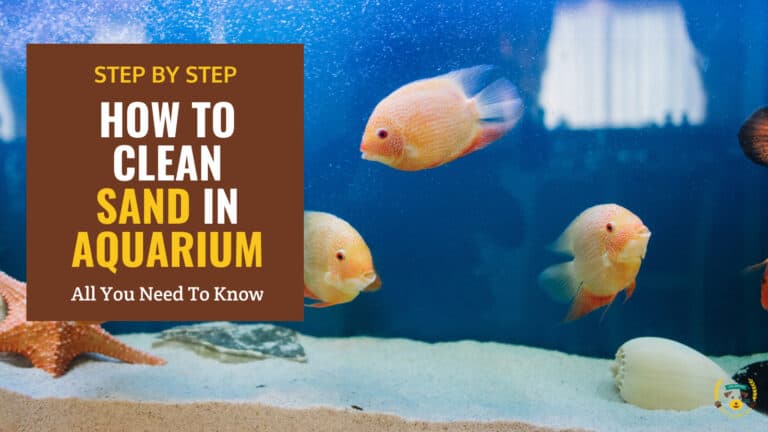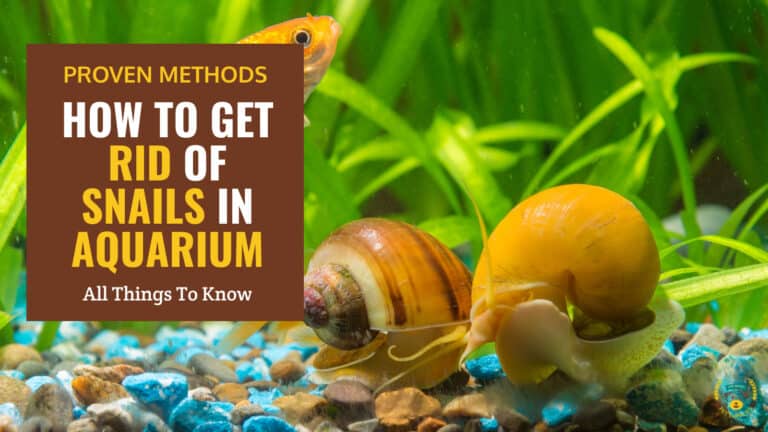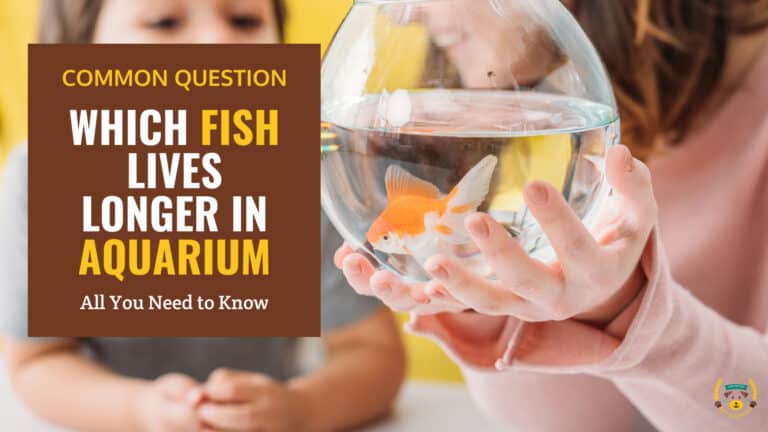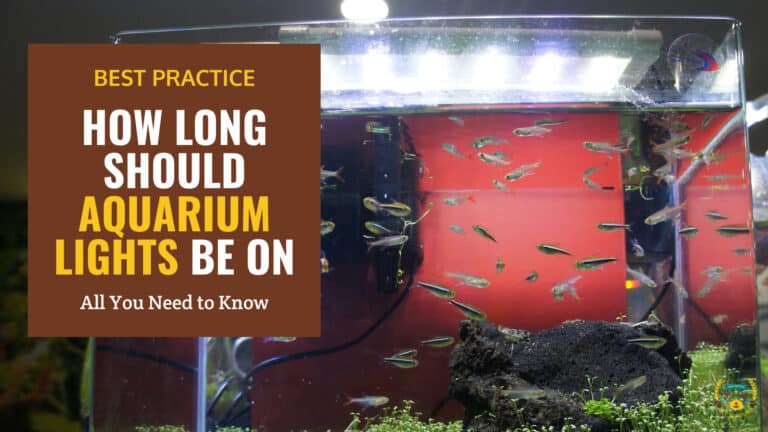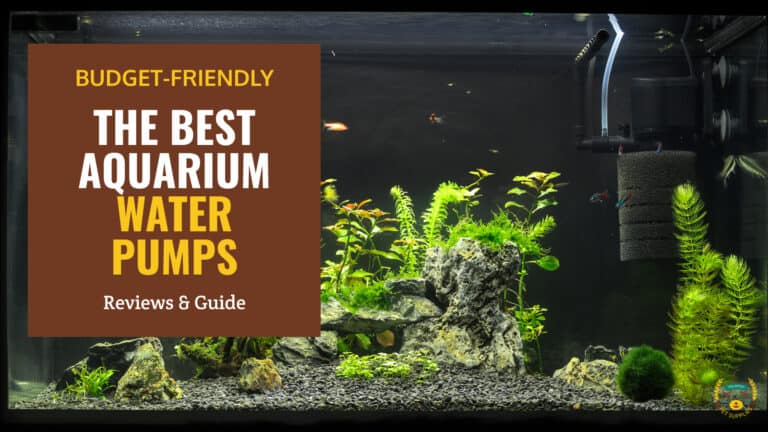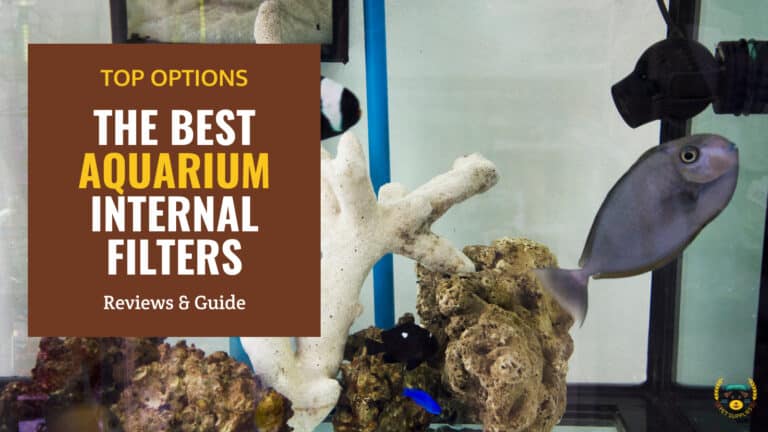9 Cloudy Aquarium Water Causes and Solutions
Last updated: January 22, 2024
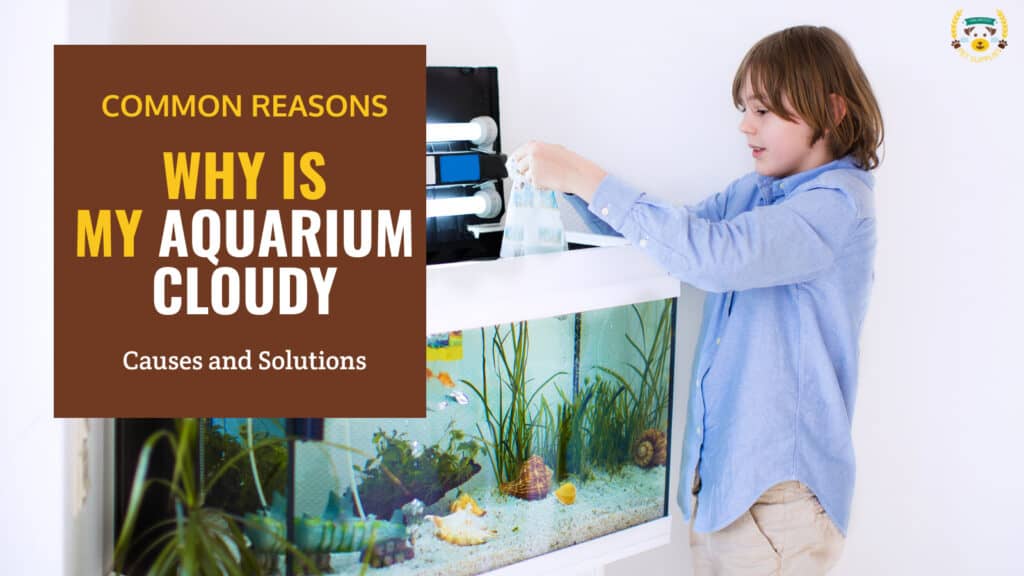
Summary
- Cloudy water means a problem in the tank. It can hurt fish.
- Too many fish, too much food, dirty tank, and new tanks cause cloudy water.
- Fixes are less fish, less food, clean tank, new filters, take out dead stuff, clean glass, control light.
- Green water is algae. Fix by less light time, special filters, live plants.
- Brown water is wood and waste. Fix by removing waste and using carbon.
- White water can be sand, bacteria or waste. Rinse sand, filter maintenance, water changes help.
- Must fix cloudy water fast so fish stay healthy. Be patient to get clear water again.
Do you have a cloudy aquarium? It's frustrating when you can't see your fish and plants clearly. Not only that, but cloudy water can also be harmful to your aquatic pets.
There are several reasons why your aquarium water may be cloudy. It could be due to overfeeding, using the wrong type of filter, or even an algae bloom.
In this article, we'll explore 9 common causes of cloudy aquarium water and provide solutions to help you clear up your tank.
By following our recommendations, you'll be able to enjoy a clear and healthy aquarium for your aquatic pets.
Most Common Reasons Your Aquarium Water Cloudy
Let's explore the most common reasons why your aquarium water may be cloudy and provide some solutions to help you restore your tank's crystal-clear water.
1. Too Many Fish
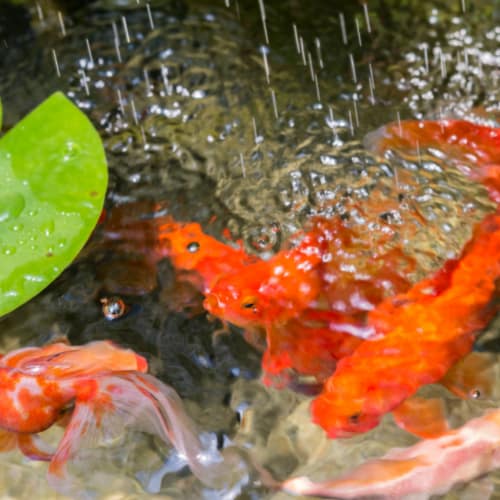
Having too many fish in your aquarium is one of the most common causes of cloudy water. Overcrowding can occur when you purchase too many fish at one time without considering the size of your tank. It's important to remember that each fish requires a specific amount of space to thrive and produce waste in a healthy way.
The dangers of overcrowding your aquarium include higher levels of fish waste, ammonia, and nitrate in the water, which can lead to nitrogen cycle disruption and oxygen depletion. If you continue to add more fish to an already crowded tank, you'll worsen these problems even further.
The solution to this issue is to either reduce the number of fish in your tank or increase the size of the tank. The amount of space needed for each fish depends on its species, so you should research the needs of your fish before purchasing them.
One great way to calculate how many fish to have in your tank is to use the "1 inch of adult fish for every gallon (or two gallons) of water" formula. This is very useful, as different fish types can grow to different sizes.
For example, in a 10-gallon aquarium, you can house 5 2-inch fish or three 3-inch fish. You get the idea! Having 2 gallons of water for every inch of fish can only make things better, and your little buddies will be more comfortable.
By following these guidelines, you can ensure that your fish have enough space to thrive, and you can keep the water in your aquarium clear and healthy.
2. Overfeeding Fish
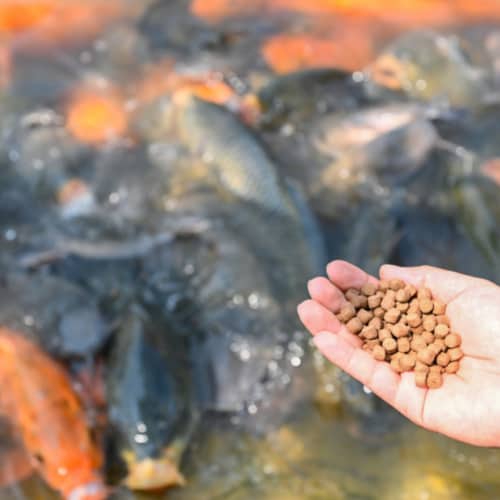
One common cause of cloudy aquarium water is overfeeding fish. The excess food can sink to the bottom of the tank and contribute to waste build-up. This waste, along with excess nutrients, can lead to bacterial blooms that cause your water to become cloudy. Here's how to address the issue of overfeeding and prevent cloudy water:
- Limit the amount of food you give your fish: Only feed your fish what they can consume in under 2-3 minutes. Once you see them stop actively eating, it's best to stop adding more food to the tank.
- Space out feedings: Rather than feeding your fish all at once, space out your feedings to 1-2 times per day. This helps prevent food from sinking to the bottom and contributing to water quality issues.
- Consider an automatic fish feeder: If you find it challenging to limit food intake, using an automatic fish feeder can help ensure your fish get the right amount of food. Set the feeder to distribute food in small portions over a specific period to prevent your fish from overeating and reduce waste in your aquarium.
By limiting the amount and frequency of feeding your fish, you can prevent overfeeding, reduce waste buildup and improve the water quality in your aquarium, which helps prevent the occurrence of bacterial blooms that cause cloudy water.
3. New Aquarium and Cloudy Water
When setting up a new aquarium, it is common to experience murky water. This is because the tank is in the process of cycling, which involves establishing beneficial bacteria in your tank that break down ammonia and nitrites produced by fish waste and uneaten food.
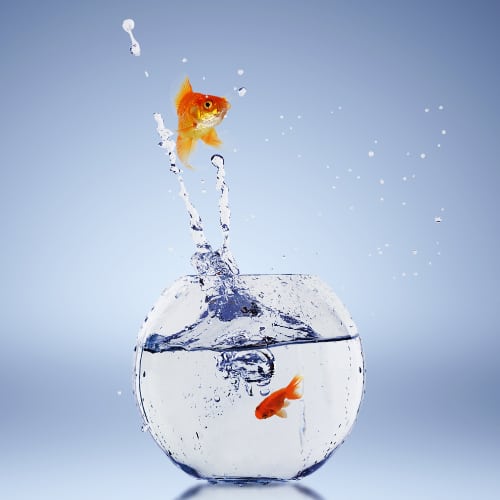
To address this issue, it is important to be patient and let the tank cycle for a couple of weeks before adding fish. During this time, the bacteria colonies that break down toxic substances in the water will establish themselves.
In addition to adding bacteria, it is also essential to perform partial water changes every few days to remove excess nutrients and waste products that may be causing the cloudiness. A water change of 25% every other day should suffice in clearing up the cloudy water. You can use a siphon to remove debris from the tank bed and a gravel vacuum to remove the dirty water.
Remember to monitor the water quality frequently using a test kit. The tank’s nitrogen cycle will be complete when the ammonia and nitrite levels read zero and the nitrate level is between 5-20 parts per million.
Also make sure to aim for an ideal general water hardness of 2-8 dGH. Use a combination of softening water methods explained in this guide and acclimate fish slowly when altering hardness.
It is important to note that introducing fish into a tank before it has fully cycled can be fatal to the fish. Patience in establishing a healthy tank will lead to healthy and happy fish down the line.
4. Inadequate Filtration
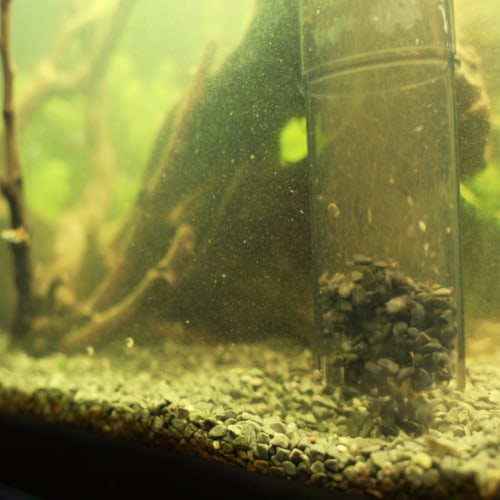
Poor filtration results in the accumulation of uneaten food, fish waste, and plant debris in your tank. Here's how to address this issue:
- Upgrade your filter: You might need a more powerful filter to handle the amount of waste produced by your fish. An upgraded filter will have more space for good bacteria, which are vital for removing excess nutrients that cause cloudy water. A filter with a flow rate of at least four times the tank volume per hour is recommended.
- Add extra filtration components: Consider adding a sponge filter or a hang-on-back filter to supplement your existing filter. This will increase the efficiency of your filtration system and ensure that your water stays clear.
- Clean your filter regularly: A dirty filter can lead to blockages and poor filtration, which can cause cloudy water. Be sure to clean your filter regularly, either by replacing the filter media or rinsing it with dechlorinated water. Regular cleaning will help ensure that your filter is functioning correctly.
If you are not sure which quality filter to choose, we recommend going through our detailed guide on canister filters. These are top performers that will surely keep your aquarium clean and healthy for your fish.
For specifically internal aquarium filters, be sure to check out our guide on the aquarium internal filters.
5. Dead Fish or Organic Matter
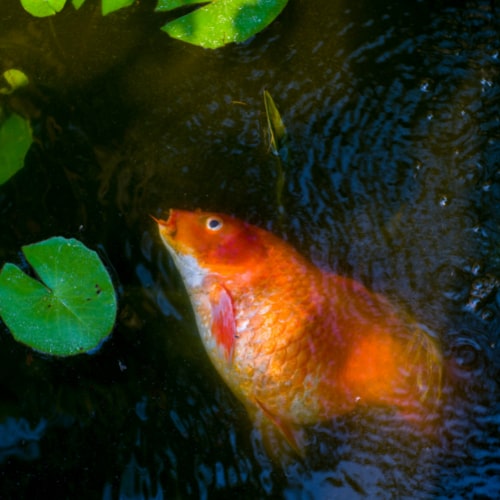
The cloudy appearance could be due to the presence of dead fish or decaying organic matter in the tank. Dead fish and organic matter can cause excess levels of nitrites and ammonia in the water, which in turn can cause bacterial blooms and murky water.
To fix this issue, it's important to remove any dead fish or organic matter from the aquarium immediately because they can be a source of harmful bacteria. Use a siphon to vacuum any waste material from the bottom of the tank.
Once you've removed the waste material, it's recommended to perform a partial water change of about 25% to help reduce the levels of nitrites and ammonia in the water. During the water change, be sure to vacuum the substrate thoroughly to remove any additional debris.
In addition to addressing the immediate issue of dead fish or matter in your tank, it's important to also address the root cause of the problem. Consider reducing your feeding amounts and frequency, as excess food can contribute to organic matter buildup. Also, be sure to remove any uneaten food from the aquarium to help prevent further issues.
6. Dirty Glass
Algae buildup and grime on the glass can greatly reduce the clarity of the water in your tank. Fortunately, cleaning your aquarium glass is a simple task that can vastly improve the appearance of your tank.
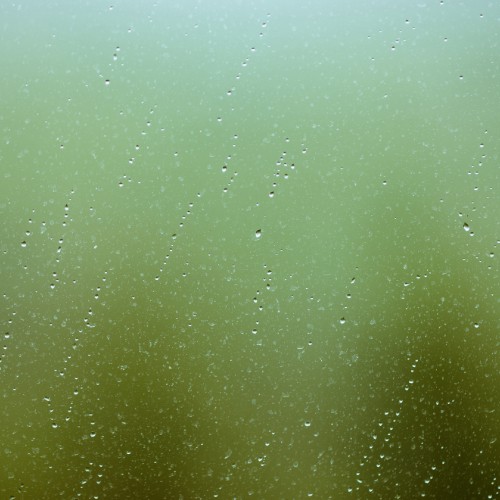
To properly clean your aquarium glass, follow these steps:
- Use a clean cloth or sponge to wipe away any algae or debris on the glass.
- Next, use a scraper tool to remove any tough spots that are not easily wiped away. Be careful not to scrape too hard and damage the glass.
- After this, use a siphon or aquarium vacuum to remove any debris or grime that may have fallen onto the substrate during the cleaning process.
- Finally, wipe the glass dry with a clean cloth.
Cleaning the glass in your aquarium regularly is important to prevent cloudiness, maintain the appearance of your tank, and ensure that your fish are living in a healthy environment. As a general rule, you should clean your aquarium glass at least once a week.
In addition to cleaning the glass, it is also crucial to take other basic measures to maintain proper water quality in your aquarium, such as performing regular water changes and keeping up with filter maintenance.
7. Your Substrate
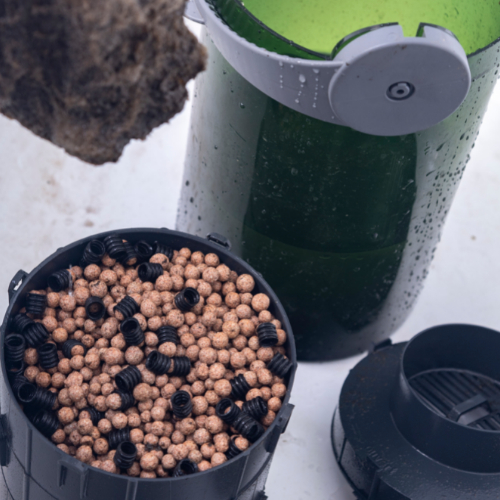
The substrate in your aquarium plays an important role in maintaining a healthy environment for your fish. It not only provides a natural setting for your aquarium but also serves as a filter for organic waste and uneaten food that could cause cloudy water. Here are some tips to ensure your substrate is not the reason for your cloudy water issue:
- Vacuum regularly: Your substrate can accumulate waste and debris, leading to ammonia spikes that promote bacteria growth. A siphon or gravel vacuum can help remove any excess debris from the substrate, reducing nutrient build-up that could cause cloudy water.
- Avoid overfeeding: Overfeeding your fish produces more waste that can potentially turn into uneaten food particles that settle on your substrate. These excess wastes affect your water's quality and clarity, so feed your fish only what they can consume within minutes.
- Use appropriate substrate materials: Selecting the right substrate material is important as it determines how easy it is to clean and provides a surface area for bacterial colonies to grow and develop. Sand or gravel are commonly used materials that trap excess waste while providing a suitable environment for beneficial bacteria growth.
- Promote proper water flow and surface agitation: Dead spots and low-flow areas in your aquarium can encourage waste buildup. Ensure aeration and surface agitation are sufficient to maintain the water column's flow and prevent waste collection.
As you may have noticed by now, many of the causes and solutions provided here are interconnected, and addressing one issue usually entails fixing other underlying causes to get the best results.
8. Too Much Light
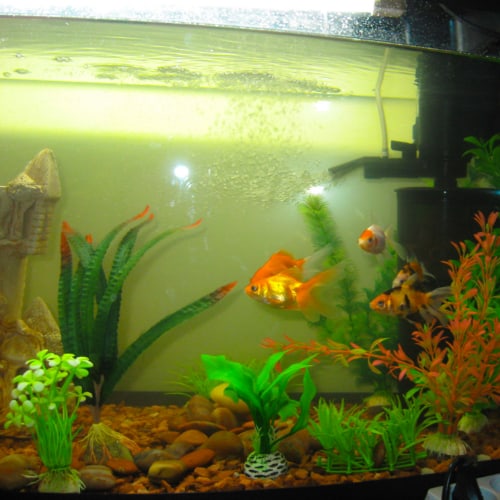
If you have noticed that your aquarium is cloudy, it may be worthwhile to evaluate the amount and intensity of light your fish and plants are receiving.
You should consider decreasing the duration and intensity of light in your aquarium. Here are some steps that can help you do that:
- Use a timer to ensure consistent lighting times and limit the duration to a maximum of eight hours per day.
- Move your aquarium away from direct sunlight and avoid any equipment that emits unnecessary light.
- Consider using a light meter to measure the intensity of light in your aquarium. Most aquarium plants thrive with an intensity of around 50-100 PAR units, depending on the species.
Understanding the daily light cycle for aquatic environments is crucial not only to prevent issues like cloudiness but also to ensure the overall health and growth of the aquatic life within your aquarium. It's important to strike the right balance in the lighting duration to mimic the natural habitat of your fish and plants. To go deeper into how to configure these lighting durations effectively, you may want to learn more about the optimal duration for aquarium lighting.
9. Bacteria Bloom
Bacterial Bloom occurs when there is a sudden increase in the number of beneficial nitrifying bacteria colonies due to an increase in nutrients, which can cause the water to take on a milky or white appearance.
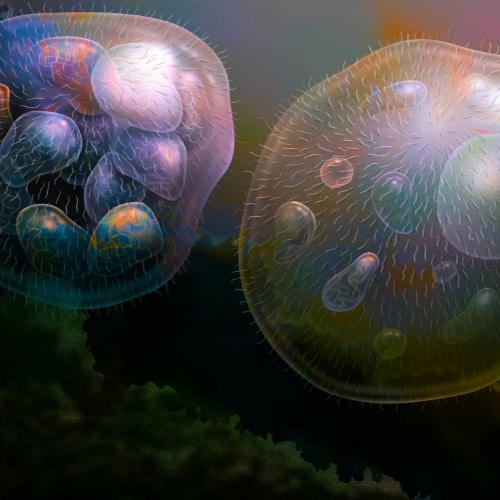
While these bacteria are essential to the nitrogen cycle and aquarium health, an overabundance of them can cause cloudiness in the water.
Bacterial bloom can affect both new and established aquariums and is typically caused by excess waste or uneaten food. To prevent bacterial bloom, it’s important to ensure that the aquarium is properly established and maintained, including regular testing of nutrient levels and partial water changes.
Following other guidelines mentioned earlier will also help (Proper filtration, avoiding overfeeding, etc.); you may also add an activated carbon filter media or use activated carbon pads that absorb excess nutrients feeding the bacteria bloom.
What Does the Color of My Aquarium Water Tell Me?
Your aquarium water should be crystal clear to ensure the health and well-being of your aquatic pets. The color of your aquarium water can give you important clues about what may be going on in your tank. Let's explore what the color of your aquarium water is telling you.
Green Water
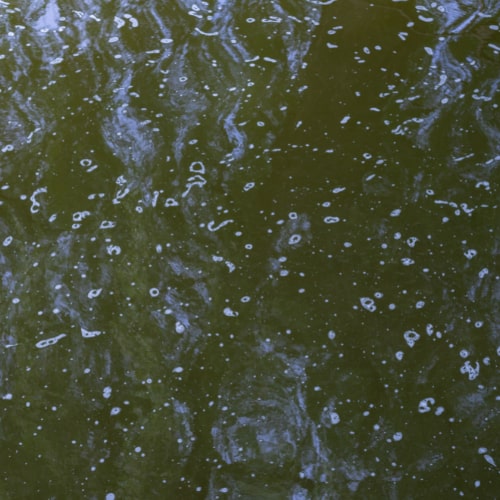
Green water occurs when single-celled algae, also known as "free-floating algae," bloom out of control, causing the aquarium water to look like pea soup. The main cause of green water in an aquarium is a nutrient-rich environment, particularly an excess of ammonia, phosphate, and nitrate, combined with too much light.
Fortunately, there are several ways to address and prevent green water in your aquarium. Here are some tips:
- Reduce light duration: Try limiting the amount of light your aquarium receives by reducing the duration your aquarium lights are on daily.
- Use a diatom filter or UV sterilizer: These devices can kill or remove single-celled algae in your aquarium. A diatom filter removes particles as small as 1 micron and is effective for clearing water quickly. A UV sterilizer uses UV light to kill pathogens, algae, and bacteria.
- Add live plants: Live plants can help absorb excess nutrients, which can decrease the growth of single-celled algae. However, if your aquarium has already turned green, adding plants alone may not be enough to clear the water.
- Proper filtration, substrate, and stocking levels: Good filtration can maintain good water quality and remove excess nutrients. Avoiding overstocking can prevent overfeeding, which can lead to a nutrient-rich environment.
Remember, green water is not harmful to your fish, but it can be unsightly and indicate other potential issues with your aquarium's water quality.
Brown Water
Brown water in your aquarium can be a frustrating sight, but it is a common problem that can be easily solved. The discoloration of the water is caused by organic compounds that are naturally released into the water by decaying materials like driftwood. Here are a few reasons why your aquarium water might be turning brown:
- Use of driftwood: If you've recently added driftwood to your aquarium, there's a good chance the tannins that are released from it are causing the brown discoloration in the water.
- Decomposing fish food: If you're overfeeding your fish, or there's uneaten food in the tank, it will start decomposing and contribute to the problem.
- Dirty substrate: The substrate in your tank can also be a source of the problem. If it's not cleaned properly or is too old, it can release organic compounds into the water.
To fix this issue, you need to remove any decaying materials, uneaten food, and dead plants in your tank. Next, clean the substrate thoroughly, or replace it if necessary.
Once you've done these steps, perform partial water changes frequently until the brown color disappears. You can also use activated carbon or Purigen, which are both excellent at removing discoloration from the water.
Remember to be patient, and don't try to fix the issue in one go. Brown water in your aquarium can take time to clear up, but if you follow these steps, you'll have a clear tank in no time.
White or Grayish Water
White or grayish water in your aquarium can indicate several different issues, including sand or gravel dust, bacterial blooms, and excess organic waste. Here are some possible causes and solutions for this issue:
| Possible Causes | Possible Solutions |
|---|---|
| Sand or gravel dust | Rinse your sand or gravel thoroughly before adding it to the tank. Consider using a substrate cleaner during water changes to remove excess waste and debris. |
| Bacterial blooms | Increase surface agitation to improve oxygen levels, which can help to reduce bacterial growth. Make sure your filter is properly maintained and functioning optimally. |
| Excess organic waste | Regularly perform water changes to remove excess waste and nutrients. Avoid overfeeding your fish and remove any uneaten food promptly. Consider adding a clean-up crew (like snails or shrimp) to help consume excess organic matter. |
In addition to these solutions, you can also try using activated carbon in your filter. Activated carbon can help to improve water quality by effectively removing impurities and odors.
Frequently Asked Questions
Let's now cover the commonly asked questions related to aquarium water color and quality issues.
Should I Just Leave the Cloudy Aquarium and It Will Correct Itself?
Ignoring cloudy water issues in your aquarium and letting nature take its course can lead to more serious problems down the line. Harmful toxins and bacteria can build up and harm your fish and other aquatic creatures. While some cloudy water issues may be temporary and self-correcting, it is important to address them promptly to ensure a healthy and thriving aquarium environment.
Doing nothing and allowing the water to remain cloudy also puts additional stress on your fish. Poor water quality can lead to weakened immune systems and increased susceptibility to disease. Additionally, excess organic waste in the water can contribute to the growth of harmful bacteria and algae, which can cause further harm to your aquatic pets.
While it may seem like a hassle to constantly monitor and maintain your aquarium, the effort is worth it to ensure the health and longevity of your aquatic pets. Don't let nature take its course when dealing with cloudy water issues - take proactive steps to address the problem and maintain a healthy, thriving aquarium environment.
Is Dirty Water Bad For Fish?
Dirty water can be detrimental to the health of fish kept in aquariums. It is crucial to maintain good water quality to ensure the well-being of your finned pets. Dirty water can contain high levels of ammonia, nitrites, and nitrates that can cause stress, disease, and even death in fish.
Regular water changes and proper filtration are necessary to remove excess nutrients and toxic compounds from the aquarium water. A general guideline is to replace 10-15% of the water every week. Make sure to treat the tap water with a de-chlorinator before adding it to the aquarium. Also, choose a filter that is appropriate for the size of your aquarium and the fish you keep.
Additionally, use an aquarium water test kit to monitor the pH, ammonia, nitrites, and nitrates levels in the aquarium water regularly. High levels of these compounds can cause health issues for fish.
Should I Change the Water More Often to Correct Cloudy Aquarium Water?
Cloudy water is a sign of an unhealthy aquarium, and changing the water is one of the ways to fix the problem. How often you should change the water depends on several factors such as the tank size, number of fish, and the level of organic matter in your aquarium.
To ensure healthy water for your fish and aquatic plants, it is ideal to change 10% to 15% of the water every week. This percentage can vary depending on your tank's size. For example, a 50-gallon tank will require a 5 to 7.5-gallon water change, while a 10-gallon tank will require a 1 to 1.5-gallon water change.
If your water is exceptionally cloudy or foul-smelling, it may be necessary to change up to 25% of the water weekly until the issue is resolved. During water changes, it is essential to remove all debris from the substrate, including uneaten food, fish waste, and excess plant material. Regular debris removal can also help reduce the frequency of water changes by reducing the level of organic matter in the tank.
Should I Change Filter Media or Get a New Filter?
The answer depends on the situation.
If you have not changed your filter media in a while and it appears old and dirty, it's time to replace it. Old filter media can become clogged and reduce the efficiency of your filter, leading to poor water quality.
It's important to maintain clean and functioning filter media to ensure the health of your fish and the clarity of your aquarium water.
However, if you have already changed your filter media and the issue is still not resolved, it may be time to consider getting a new filter. This is especially important if your current filter is old and outdated and no longer functioning at its full capacity.
When choosing a new filter, consider the size of your aquarium and the type of fish you have. Be sure to get a filter that is appropriate for the size of your tank, as too much or too little filtration can also be the cause of cloudy water. With the right filter, your aquarium water should be crystal clear for your fish to thrive in.
Final Words
A cloudy aquarium can be frustrating, but it's not the end of the world.
By identifying the root cause(s) and implementing the right solution(s), you can have crystal-clear water in no time. Remember to always prioritize the health and well-being of your aquatic pets, and enjoy the beauty and tranquility of your aquarium!
By following the solutions outlined in this article, you can ensure a clean and healthy environment for your aquatic pets.
So don't let cloudy water dampen your aquarium experience, take action and enjoy the beauty of your underwater world!
Thanks for reading!

